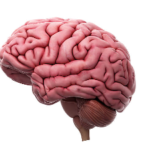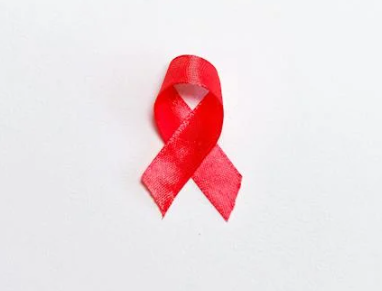Figures suggest that between the discovery of the virus that causes AIDS in 1983 and 2014, some 39 million people have died from the disease. It is important to make the distinction between HIV which stands for Human Immunodeficiency Virus and AIDS which stands for Acquired Immune Deficiency Syndrome. HIV is the virus that attacks the human immune system and AIDS is the the syndrome, the set of symptoms and illnesses that the infected person suffers in the latter stages of HIV.
June 5th 1981, a report was issued citing five healthy gay young men with unusual infections pointing to a new disease and this is perhaps the reason why the disease was initially called GRID – Gay Related Immune Deficiency. This was the first citing of the disease by the Center for Disease Control (CDC) in the United states of America and the disease would later come to be known as AIDS. A task-force was created by the CDC with Doctor James Curran at the helm. The remit of the task-force was to investigate past and present cases of the disease and try to discover amongst other things when the infection first appeared in the United States. The conclusion was that AIDS first appeared in 1978.
The french Nobel winning Laureate (2009) and his team were credited as being the first scientists to discover the HIV-1, HIV-2 strains and AIDS although this is not without some controversy. Patients with HIV were found to be depleted of a type of white blood cell known as T4 Helper Lymphocytes which help the human body protect itself against foreign organisms. T4 cells are now better known as CD4 cells. The mitochondria which is on the surface of the cell acts as a gatekeeper with a lock and key in order to keep out anything damaging to the cell. However, HIV creates an enzyme cap that mimics the key allowing the virus into the cell. Once inside the cell, HIV uses the cell itself to start replicating more HIV. This replication continues until the integrity of the cell is compromised and the replicated viruses leave an attach to other CD4 cells. Some researcher believe that Curcumin could help in this regard because Curcumin can produce a curcuminoid which could travel into the cell protoplasm and help neutralise the enzyme cap of the virus.
The most common cause of transmission is unprotected sex although in the past, people have caught the virus through transfusions of contaminated blood. This was before the virus was identified in blood supplies. HIV can also be transmitted during pregnancy from mother to child and through the use of used syringes by drug users. There are many myths that persist regarding the transmission of HIV such as sitting on toilet seats and holding hands as sources of infection which are not true.
Attempts to stop the spread of the disease include health campaigns that advocate safe sex and the use of condoms. Many programs around the world have been set up that allow drug users to exchange their dirty needles for clean needles without the involvement of law enforcement. Male circumcision is also believed to be helpful in the prevention of HIV.
It is believed that when a person first becomes infected with HIV (Acute Primary Infection), they may experience flu like symptoms within the first one to four weeks lasting for a week or so. Unfortunately, experiencing the flu is not uncommon and a bout of the flu would not be a reliable indicator of HIV infection. Not all people will experience symptoms. Secondly, after any initial symptoms, the HIV infection can go into an asymptomatic stage lasting for ten to fifteen years where the virus continues to replicate and damage the immune system without showing outward signs. The third stage is where the symptomatic infections appear such as bacterial and fungal diseases. By this stage the person’s immune system is so compromised that simple infections that an uninfected person would easily fight off now succumb to them. Once these infections become serious, then the person is said to have AIDS. Symptoms include weight loss, night sweats, diarrhoea, fever, persistent coughing, skin problems, constant infections and serious illnesses.
Because AIDS is a virus, a number of antiretroviral drugs have been developed. These drugs attempt to stop the virus from replicating. The antiretrovirals are not an attempt at a cure but try to slow down the progression of HIV and therefore assist the immune system. In this regard, Curcumin was investigated because amongst its many properties, it is an anti viral. In 2015, The University of Texas MD Anderson Cancer Center looked at Curcumin’s potential use as a treatment for HIV. The researchers found that Curcumin worked in a number of ways including the inhibition of the inflammatory molecules known as interleukins TNF-α, NF-κB, COX-2. Curcumin also was found to inhibit Tat transactivation of the HIV1-LTR genome and various kinases.
One of the most devastating and debilitating effects of HIV infection is HIV-Associated Neurocognitive Disorder which can leave sufferers with dementia and brain infections. 2013, The National Natural Science Foundation of China funded a study into the effects of Curcumin on the brains of rats infected with the HIV-1 (the most common type of HIV). HIV-1 is thought to cause neuronal damage and Central Nervous System dysfunction and the results from the study indicated that Curcumin had a powerful inhibitory effect against HIV-1 gp120 induced neuronal damage. Curcumin was also shown to lower the levels of reactive oxygen species and inflammatory cytokines TNF-α and MCP-1.
Curcumin inhibits the activity of the TAT protein which plays a vital role in HIV replication. This subject was looked at in the study Ali, A. and Banerjea, A. C. Curcumin inhibits HIV-1 by promoting Tat protein degradation. Sci. Rep. 6, 27539; doi: 10.1038/srep27539 (2016). The study showed that the treatment of TAT proteins with Curcumin produced a dose dependent response decrease in the levels of the TAT protein. The researchers in the study concluded that Curcumin has been shown to lower levels of TAT protein which makes Curcumin a potent inhibitor of HIV-1 replication.





